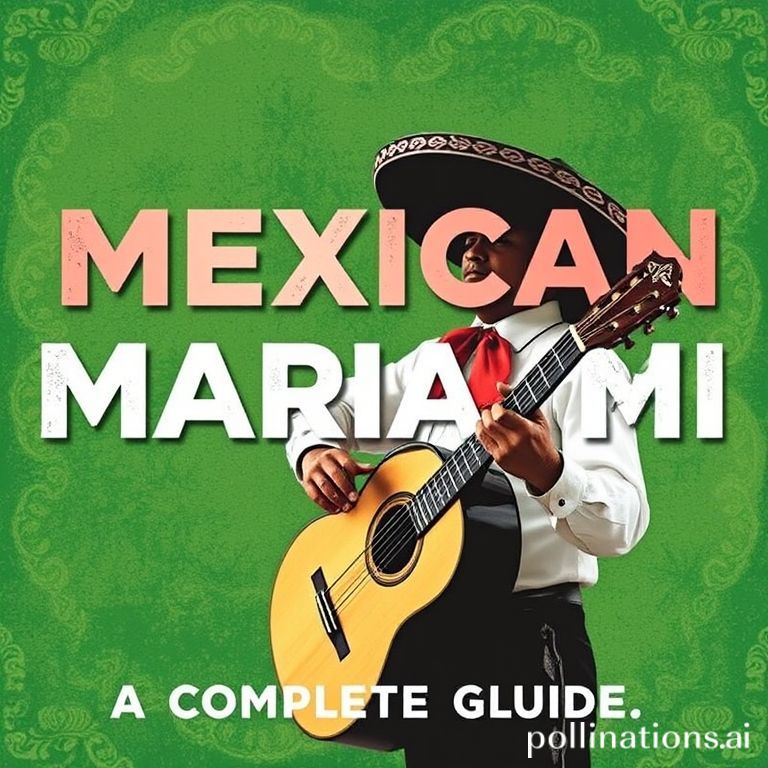Mariachi music is more than just a genre; it’s a vibrant symbol of Mexican culture, a soundtrack to celebrations, and a heartfelt expression of national pride. From intimate family gatherings to grand public festivities, the spirited sounds of mariachi bands resonate deeply within the Mexican soul. But what exactly is mariachi, and what makes it so special? This guide will explore the rich history, unique instrumentation, and enduring appeal of this beloved musical tradition.
Whether you’re a seasoned aficionado or a curious newcomer, prepare to be swept away by the passionate melodies and captivating rhythms of Mexican mariachi music. Let’s dive into the heart of this cultural treasure and discover what makes it a truly unique and unforgettable art form.
The History of Mariachi Music
The origins of mariachi music are rooted in the western Mexican state of Jalisco. While the exact details are debated, it’s widely believed that mariachi evolved from indigenous musical traditions combined with Spanish influences during the colonial period. Originally, mariachi bands consisted of stringed instruments such as violins, guitars, and harps. Over time, the instrumentation expanded to include trumpets, which have become a defining characteristic of modern mariachi. The term “mariachi” itself is thought to have originated from the name of a local wood used to build dance platforms, or perhaps from a regional indigenous word.
Evolution and Recognition
In the early 20th century, mariachi music gained national prominence thanks to radio broadcasts and recordings. As mariachi bands traveled throughout Mexico and beyond, the music evolved further, incorporating new styles and influences. The iconic charro suit, with its ornate embroidery and distinctive hat, became the standard attire for mariachi musicians, adding a visual element to the performance. In 2011, UNESCO recognized mariachi as an Intangible Cultural Heritage of Humanity, solidifying its importance on the world stage.
The Instruments of a Mariachi Band
A traditional mariachi band features a diverse array of instruments, each contributing to the distinctive sound. Understanding these instruments is key to appreciating the complexity and beauty of mariachi music.
- Violins: Typically, a mariachi band includes several violins, which carry the melody and provide soaring harmonies.
- Trumpets: The trumpets are the most recognizable instruments in a mariachi band, delivering powerful and celebratory fanfares.
- Guitarrón: This large, six-string bass guitar provides the rhythmic foundation for the ensemble.
- Vihuela: A small, five-string guitar with a rounded back, the vihuela provides rhythmic and harmonic accompaniment.
- Guitar: A standard six-string guitar is also included, adding to the overall harmonic texture.
- Harp: Although less common in modern mariachi, the harp was a traditional instrument and is still used in some ensembles, providing delicate and intricate melodies.
The Cultural Significance of Mariachi
Mariachi music is deeply intertwined with Mexican culture and identity. It’s present at every major life event, from baptisms and weddings to quinceañeras and funerals. The songs often tell stories of love, loss, patriotism, and regional pride. The passionate vocals and instrumental arrangements evoke a wide range of emotions, connecting listeners to their heritage and shared experiences. Mariachi is more than just entertainment; it’s a living tradition that embodies the spirit of Mexico.
Mariachi Today
Today, mariachi music continues to thrive both in Mexico and around the world. Mariachi bands perform in concert halls, restaurants, and public squares, spreading the joy and beauty of this unique art form. Many young musicians are dedicated to preserving and innovating mariachi music, ensuring that it will continue to be a vibrant part of Mexican culture for generations to come. Festivals and competitions celebrate the talent and artistry of mariachi musicians, fostering a sense of community and promoting the tradition.
Conclusion
Mexican mariachi music is a testament to the power of cultural expression. Its rich history, diverse instrumentation, and profound emotional depth make it a truly unique and captivating art form. From its humble beginnings in Jalisco to its global recognition as a symbol of Mexican identity, mariachi continues to inspire and uplift people around the world. By understanding and appreciating this musical tradition, we gain a deeper understanding of Mexican culture and the universal language of music.
If you enjoyed this article, don’t forget to explore more inspiring stories on Life in Mexico!
IMAGE: A vibrant and joyful scene of a mariachi band performing in a brightly lit plaza in Guadalajara, Mexico. The musicians are dressed in traditional charro suits with ornate embroidery, playing their instruments with passion. The background features colorful colonial buildings and a lively crowd enjoying the music. The overall mood is festive and celebratory, with warm, golden lighting. The style is realistic and captures the essence of Mexican culture.


